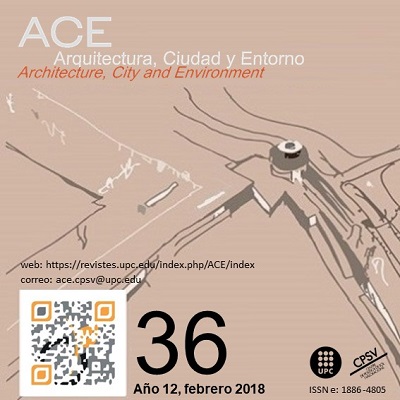Investigando los efectos del estado del ego del usuario en la selección del color en interiores residenciales
DOI:
https://doi.org/10.5821/ace.12.36.4769Palabras clave:
Psicología ambiental, alojamiento, arquitectura, análisis transaccionalResumen
Objetivo
El presente estudio tiene como objetivo identificar un color adecuado para el espacio dado el estado de ego dominante del usuario, considerando el niño interior, adulto y padre, con el fin de establecer una guía aplicada para establecer una interacción efectiva entre el espacio y el ser humano. El objetivo principal de la investigación ha sido mostrar la importancia del color en el medio ambiente, sobre la base de los principios que rigen los estados mentales y de ego humanos.
Metodología
Este estudio utiliza un método correlacional para evaluar la relación entre dos variables, incluido el estado del yo, como una variable independiente y el tipo de color seleccionado, como una variable dependiente. La recopilación de datos para este estudio se realizó como una encuesta de campo, mediante un cuestionario y estudios bibliográficos para conocer la literatura previa y, mediante un análisis de correlación de datos utilizando el test de Correlación de Pearson y el software SPSS.
Conclusiones
El análisis de los resultados obtenidos de la investigación de campo mostró que hay una alta correlación entre el niño interno y el interés por colores felices, y que, cuando el estado del ego es moderado, las personas muestran mayor tendencia a los colores brillantes que se incluyen en el área interna del niño. Por el contrario, una mejor opción de color, adecuada para las personas puede ayudarlos a lograr una mejor sensación, es decir, un estado moderado del ego y la autonomía. Esto se logra cuando la identificación del usuario y la discreción del diseñador se combinan simultáneamente para proporcionar al usuario una paz y satisfacción internas y hacer que alcance una promoción de la salud mental.
Originalidad
En este trabajo, se ha intentado investigar la relación entre los intereses internos de los seres humanos y uno de los elementos importantes de la arquitectura, el color, mediante el uso de uno de los debates psicológicos conocido como Análisis transaccional, que nunca ha existido antes, y puede ayudar en la cognición inmediata del usuario por parte del diseñador. Este documento puede ser útil para diseñadores, estudiantes de arquitectura, profesores y especialmente investigadores en el campo de la psicología ambiental.
Descargas
Publicado
Número
Sección
Licencia
COPYRIGHT
El contenido de los artículos y los comentarios en ellos expresados son responsabilidad exclusiva de sus autores, y no reflejan necesariamente la opinión del comité editor de la revista. Los trabajos publicados por ACE pueden reproducirse bajo la licencia CC-BY-NC-ND 3.0 ES más información http://creativecommons.org/licenses/by-nc-nd/3.0/es/
Lo que implica que las personas autoras sólo retienen y mantienen los derechos de Copyright dentro de las limitaciones incluidas en la licencia anterior.





































